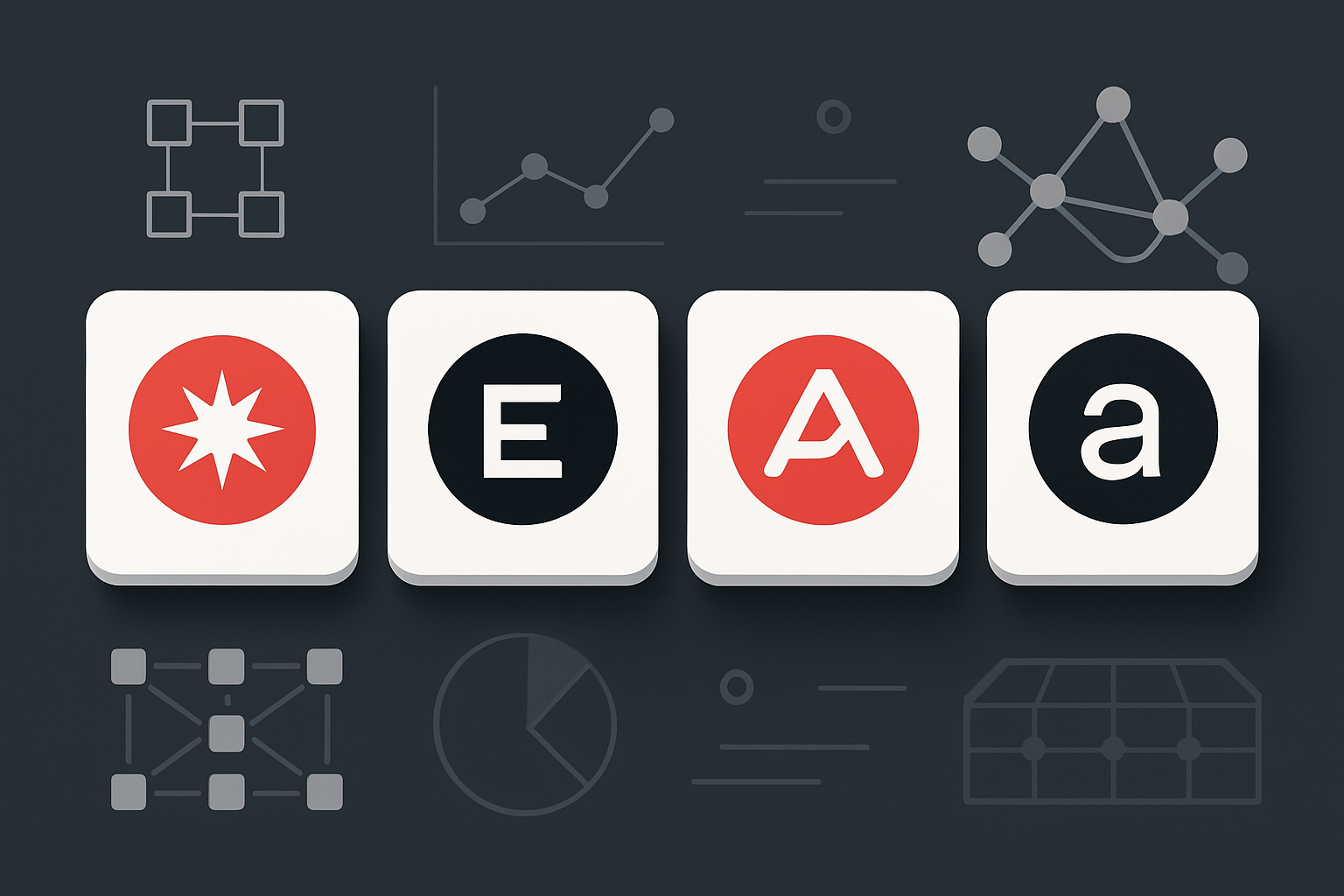
Data availability (DA) layers have become the backbone of modular blockchain design, enabling scalable, secure rollups and application chains. As the ecosystem matures, three names consistently dominate the conversation: Celestia, EigenDA, and Avail. Each brings a unique approach to data assurance, consensus, and network interoperability. In this deep-dive comparison, we’ll break down their technical distinctions and market context to help you choose the right DA solution for your next project.
Technical Architectures: How Celestia, EigenDA, and Avail Differ
At their core, all three DA layers aim to guarantee that transaction data remains accessible and verifiable for users and validators. But their underlying architectures diverge significantly:
- Celestia: Leverages fraud proofs to confirm block correctness. Data is considered available unless proven otherwise during a dispute window. This implicit availability model is reinforced by data availability sampling (DAS), allowing light nodes to efficiently verify large blocks without full downloads.
- EigenDA: Operates as a set of smart contracts on Ethereum, utilizing KZG commitments for cryptographic data integrity. Its Data Availability Committee (DAC) structure introduces scalability but also concentrates trust in a smaller validator set compared to fully open networks.
- Avail: Combines KZG commitments with erasure coding for robust data integrity checks. Built on Polkadot’s SDK stack, Avail emphasizes cross-ecosystem operability, enabling rollups from disparate chains to plug into its DA layer through its Nexus coordination hub.
This divergence is not just theoretical, it shapes real-world trade-offs in trust assumptions, scalability ceilings, and how quickly applications can achieve finality on each network.
Consensus Mechanisms and Finality: Speed vs Security
The way each DA layer finalizes blocks impacts both user experience and security guarantees:
- Celestia: Uses the battle-tested Tendermint consensus engine with block finalization around 15 seconds. This delivers rapid confirmation while maintaining Byzantine fault tolerance across a large validator set.
- EigenDA: Decouples DA from consensus by broadcasting data directly; however, ultimate settlement relies on Ethereum’s mainnet security, meaning end-to-end finality typically takes about 12 minutes depending on L1 conditions.
- Avail: Deploys a hybrid of BABE (for block production) and GRANDPA (for finality), inherited from Polkadot’s SDK. This achieves block finalization in roughly 40 seconds, striking a balance between speed and decentralization with up to 1,000 validators via NPoS.
The upshot? Celestia offers near-instant confirmations ideal for applications needing fast feedback loops; EigenDA leans into Ethereum’s security but at the cost of slower absolute settlement; Avail sits in between with broad validator participation and moderate latency.
Security Models and Data Assurance: Sampling vs Committees vs Decentralized Staking
How does each platform ensure that published transaction data remains both available and tamper-proof?
- Celestia: Relies on DAS so even lightweight clients can independently verify block data without trusting third parties. Its economic security scales with network value, the more TIA staked, the costlier it becomes for attackers to corrupt or censor data.
- EigenDA: Security depends on honest majority within its DAC plus Ethereum restaking mechanics. This enables high throughput but introduces centralization risk if committee membership becomes too concentrated or collusive.
- Avail: Implements DAS similar to Celestia but augments it with Nominated Proof of Stake, a system designed to encourage decentralization by supporting up to 1,000 validators at once. Erasure coding further reduces risks of partial data loss or malicious withholding.
If your use case demands maximum decentralization or light client support at scale, Celestia or Avail may be preferable; if you need tight Ethereum integration or very high throughput for L2s, EigenDA stands out despite its more centralized committee structure.
6-Month Price Comparison of Leading Data Availability Layer Tokens
Comparing the 6-month price performance of Celestia (TIA), Avail (AVAIL), and Ethereum (ETH) as of November 7, 2025, using real-time market data.
| Asset | Current Price | 6 Months Ago | Price Change |
|---|---|---|---|
| Celestia (TIA) | $0.816516 | $1.05 | -22.7% |
| Avail (AVAIL) | $0.00812405 | $0.009000 | -9.8% |
| Ethereum (ETH) | $3,297.44 | $3,450.00 | -4.4% |
Analysis Summary
Over the past six months, all three data availability layer tokens—Celestia (TIA), Avail (AVAIL), and Ethereum (ETH)—have experienced declines in price. Celestia (TIA) saw the steepest drop at -22.7%, followed by Avail (AVAIL) at -9.8%, while Ethereum (ETH) had a more modest decline of -4.4%.
Key Insights
- Celestia (TIA) experienced the largest 6-month decline among the compared assets, reflecting higher volatility or market-specific challenges.
- Avail (AVAIL) also declined, but its price change was less severe than Celestia’s, indicating relatively better resilience.
- Ethereum (ETH), despite being the most established asset, still posted a negative return over the period, though its decline was the smallest among the three.
- The overall downward trend for these data availability layer tokens contrasts with the broader market, where some assets (e.g., Bitcoin) posted gains.
This comparison uses only the exact real-time price data provided for each asset. The ‘Current Price’ and ‘6 Months Ago’ columns reflect the most recent and historical prices, respectively, while ‘Price Change’ is calculated as the percentage change over the six-month period, as reported in the real-time data sources.
Data Sources:
- Main Asset: https://coinmarketcap.com/currencies/celestia/
- Avail: https://www.coingecko.com/en/coins/avail
- Ethereum: https://www.coingecko.com/en/coins/ethereum
- Bitcoin: https://www.coingecko.com/en/coins/bitcoin
- Solana: https://www.coingecko.com/en/coins/solana
- Arbitrum: https://www.coingecko.com/en/coins/arbitrum
- Optimism: https://www.coingecko.com/en/coins/optimism
- Polygon: https://www.coingecko.com/en/coins/polygon
Disclaimer: Cryptocurrency prices are highly volatile and subject to market fluctuations. The data presented is for informational purposes only and should not be considered as investment advice. Always do your own research before making investment decisions.
Ecosystem Integration and Interoperability Focus
The modular blockchain world thrives on composability, not lock-in. Here’s how each solution approaches integration:
- Celestia: Prioritizes neutrality so any execution environment can build atop it without prescriptive assumptions about settlement layers. Its ecosystem already hosts diverse rollups and cross-chain protocols seeking low-cost DA services (see detailed comparison here).
- EigenDA: Is purpose-built for Ethereum L2s via EigenLayer restaking, offering seamless integration if you’re building in the broader Ethereum ecosystem but less flexibility outside it.
- Avail: Pushes interoperability further by enabling multi-chain rollup connectivity through its Nexus layer, a trust-minimized hub that coordinates cross-chain messaging without relying on centralized bridges or custodianship models.
This focus on open connectivity makes Avail attractive for projects targeting multi-chain deployments or cross-ecosystem composability beyond just EVM-compatible chains.
Celestia (TIA) and Avail (AVAIL) Price Prediction 2026-2031
Forecast based on current DA layer competition, market trends, and ecosystem growth. Prices reflect potential bullish and bearish scenarios, accounting for adoption and technical innovation.
| Year | TIA Minimum Price | TIA Average Price | TIA Maximum Price | AVAIL Minimum Price | AVAIL Average Price | AVAIL Maximum Price | Year-over-Year Change (TIA Avg) | Year-over-Year Change (AVAIL Avg) |
|---|---|---|---|---|---|---|---|---|
| 2026 | $0.68 | $0.92 | $1.30 | $0.0070 | $0.010 | $0.016 | +13% | +23% |
| 2027 | $0.73 | $1.08 | $1.55 | $0.0082 | $0.013 | $0.021 | +17% | +30% |
| 2028 | $0.81 | $1.31 | $1.85 | $0.0091 | $0.016 | $0.027 | +21% | +23% |
| 2029 | $0.90 | $1.54 | $2.20 | $0.010 | $0.019 | $0.034 | +18% | +19% |
| 2030 | $1.05 | $1.85 | $2.70 | $0.011 | $0.023 | $0.043 | +20% | +21% |
| 2031 | $1.20 | $2.22 | $3.25 | $0.013 | $0.028 | $0.054 | +20% | +22% |
Price Prediction Summary
Both Celestia (TIA) and Avail (AVAIL) are projected to experience steady growth from 2026 to 2031, driven by increasing adoption of modular blockchain architectures and the expanding utility of data availability layers. TIA is expected to benefit from its technical neutrality and growing rollup ecosystem, while AVAIL’s focus on interoperability positions it well for cross-chain applications. Price ranges reflect both bullish adoption scenarios and bearish risks from competition or regulatory headwinds.
Key Factors Affecting Celestia Price
- Adoption of modular blockchains and rollup scaling solutions
- Competition from EigenDA, Ethereum EIP-4844, and other DA layers
- Ecosystem growth for Layer 2s and cross-chain infrastructure
- Regulatory developments affecting blockchain data services
- Technical improvements (e.g., sampling, consensus speed)
- Market cycles and overall crypto sentiment
- Integration with major blockchain projects or rollup solutions
Disclaimer: Cryptocurrency price predictions are speculative and based on current market analysis.
Actual prices may vary significantly due to market volatility, regulatory changes, and other factors.
Always do your own research before making investment decisions.
Choosing between Celestia, EigenDA, and Avail is not a matter of technical supremacy, but rather about aligning each DA layer’s strengths with your project’s priorities. Let’s distill the practical implications for developers and researchers evaluating these platforms in today’s market.
Real-World Trade-Offs: Cost, Throughput, and Decentralization
Celestia currently stands out for its low DA costs and high throughput. This makes it a prime candidate for small to mid-sized rollups or appchains that need fast block confirmations without heavy settlement overhead. The security model, anchored by data availability sampling and large validator participation, offers robust resistance to censorship at scale. With TIA trading at $0.816516, cost efficiency remains a major draw for early-stage projects seeking predictable expenses.
EigenDA is optimized for high-volume Layer 2s that demand Ethereum-grade security. By leveraging restaked ETH via EigenLayer and the DAC structure, it can deliver massive throughput, but at the cost of longer finality (about 12 minutes) and some centralization risk. For teams building directly within Ethereum’s ecosystem or requiring tight composability with L2s like Optimism or Arbitrum, EigenDA is hard to ignore despite its more complex trust assumptions.
Avail, meanwhile, puts interoperability front-and-center. Its NPoS validator set (up to 1,000 participants) aims to maximize decentralization while keeping costs low, AVAIL is priced at just $0.00812405. The Nexus layer positions Avail as an attractive hub for multi-chain rollups and cross-ecosystem dApps that can’t afford to be boxed into a single protocol family.

Which DA Layer Fits Your Project? Decision Criteria in 2025
If you’re building a new rollup or application chain in late 2025, here are actionable selection criteria:
- If you need fast confirmations and broad neutrality: Celestia offers best-in-class speed with minimal assumptions about your stack.
- If you require deep Ethereum integration or are scaling an L2: EigenDA’s close ties with ETH security make it ideal, just factor in longer finality times.
- If your vision includes cross-chain functionality or maximizing decentralization: Avail’s Nexus layer plus NPoS validator set give you flexibility across ecosystems at very low token cost.
The lines between these platforms may blur as the modular blockchain space evolves, expect upgrades in sampling algorithms, consensus efficiency, and cross-chain standards from all three contenders over the next year.
Market Context: Current Prices and Ecosystem Traction
The price action tells its own story. As of November 7,2025:
- Celestia (TIA): $0.816516 (24h high: $0.818061; low: $0.789012)
- Avail (AVAIL): $0.00812405 (24h high: $0.0094477; low: $0.00778364)
This reflects both network maturity and perceived adoption potential, Celestia drawing steady developer traction among new rollups; Avail rallying on its multi-chain ambitions; EigenDA betting big on Ethereum-native scale even without a public token price yet.
The Takeaway for Modular Blockchain Builders
No single DA layer “wins” outright, each platform is carving out its niche by optimizing for different slices of the modular stack:
- Celestia: Neutral hub for rapid deployment across diverse execution environments.
- EigenDA: High-throughput backbone tailored for Ethereum-centric rollup scaling.
- Avail: Interoperable layer enabling truly cross-chain applications with strong decentralization incentives.
Your optimal choice will reflect both your technical requirements (finality speed vs security model vs interoperability) and your ecosystem strategy, where you want your users and liquidity to live over the next cycle. �aIf you want more granular details on how these DA layers compare head-to-head, including performance benchmarks, check out this comprehensive breakdown: Comparing Celestia vs EigenDA vs Avail DA Layers.






